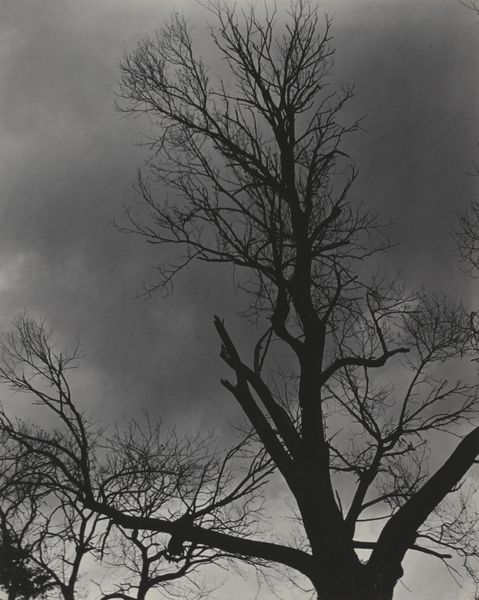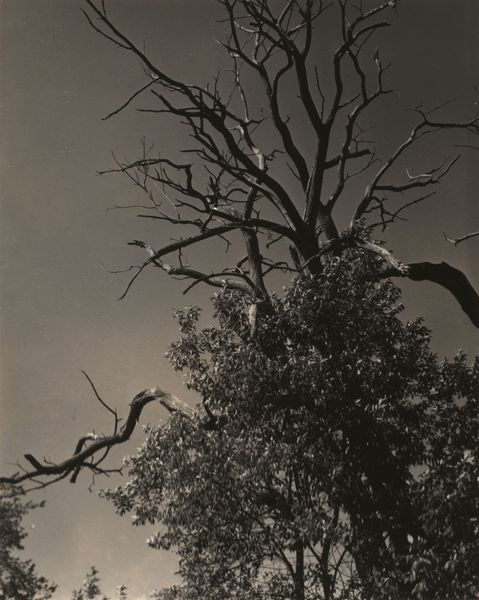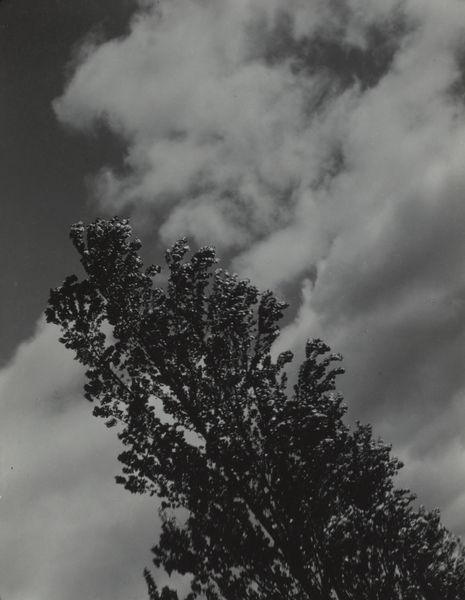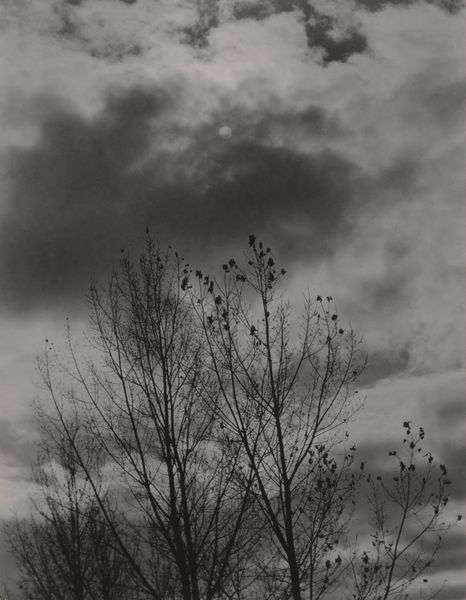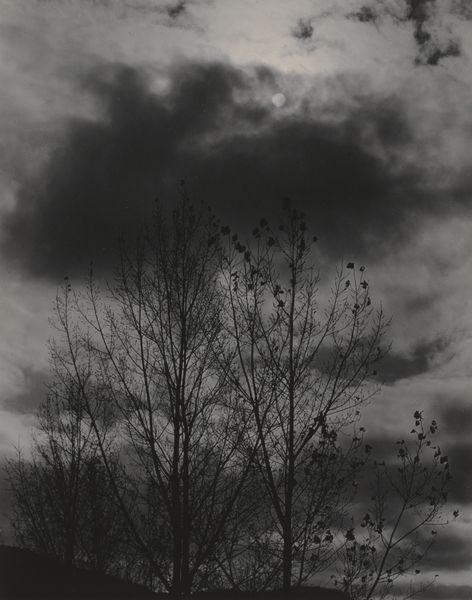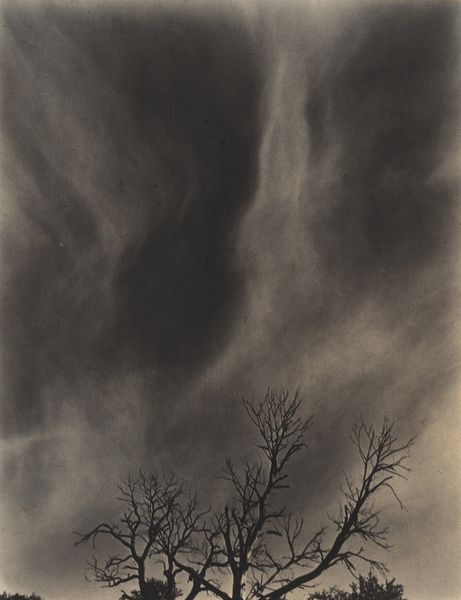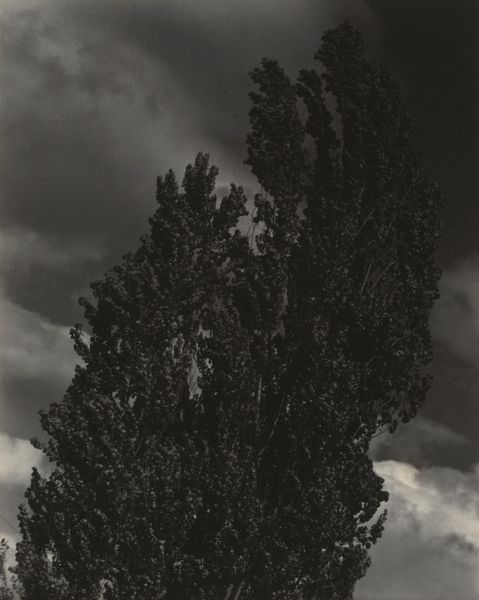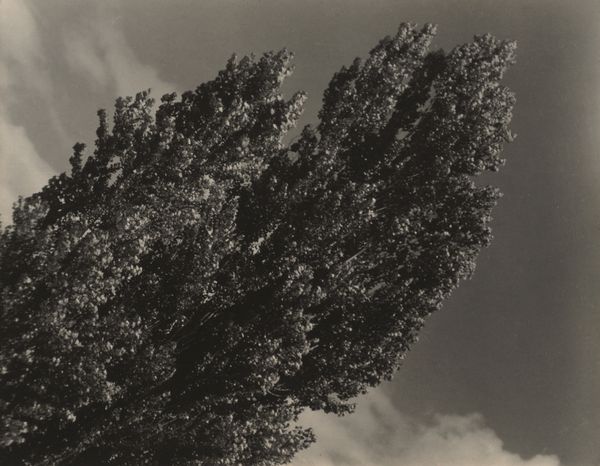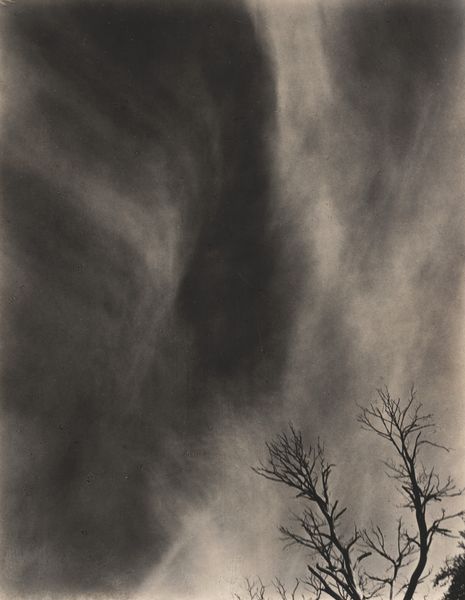
photography, gelatin-silver-print
#
black and white photography
#
snowscape
#
pictorialism
#
landscape
#
eerie mood
#
black and white format
#
photography
#
gelatin-silver-print
#
monochrome photography
#
gloomy
#
fog
#
abstraction
#
monochrome
#
mist
#
monochrome
#
shadow overcast
Dimensions: sheet (trimmed to image): 11.7 × 9.2 cm (4 5/8 × 3 5/8 in.) mount: 34.3 × 27.65 cm (13 1/2 × 10 7/8 in.)
Copyright: National Gallery of Art: CC0 1.0
Curator: Alfred Stieglitz's photograph, "Tree Set 4," created around 1924. He used a gelatin-silver print to realize the composition before us. What are your initial thoughts? Editor: Gloomy, very gloomy. It's a study in grey tones, and those stark, leafless trees against that sky give me the chills. Curator: Interesting you say that. Stieglitz was deeply invested in the material process of photography, controlling every step. The darkroom work would have been crucial in setting the tone, using the gelatin silver print to achieve such atmospheric effects. For me it reflects on labor and craftsmanship. Editor: But is it just craftsmanship? Consider when Stieglitz was working. This was post-World War I. Could that gloom reflect a wider cultural disillusionment being translated and amplified through his artistic production? A nation, a world, grappling with immense loss reflected in desolate landscapes. Curator: Absolutely. And considering Stieglitz's role in promoting photography as fine art, his choice of subject is key. He’s taking something typically seen as "nature" and imbuing it with a sense of the sublime, usually reserved for painting and sculpture, isn't it? And the cost to produce prints of this kind was certainly high for many. Editor: Right, Stieglitz fought for photography’s place in the established art world, so framing these photographs and showcasing them in galleries, meant challenging what society considered as "high art." Who had access? What was photography’s role in shaping or documenting the public perception of American ideals, its land, and society? It's a curated perspective, just like any other form of art making. Curator: I see your point. How it fits into that socio-political moment is significant, not only considering the historical climate, but how images themselves shape that understanding of experience for so many others, both in real time and beyond, once collected and shown to different and potentially broader audiences. Editor: Exactly. A photograph isn't just a reflection; it's an active participant in shaping our view of history. The social act of viewing the object, and its circulation is just as vital in any assessment. Curator: Well, I am looking at the trees as labor transformed into form, so perhaps we are both on track in seeing how images, however artful, emerge through both process and perspective. Editor: Agreed. Stieglitz gives us something to think about in terms of influence, access, image-making, and power as a whole.
Comments
No comments
Be the first to comment and join the conversation on the ultimate creative platform.

